While enslaved on a plantation on the eastern shore of Maryland, my great-great-great grandfather, Frederick Douglass, was denied an education. Slaves were prohibited by U.S. law to learn to read and write. Slave owners understood that education was incompatible with slavery. They believed that an ignorant slave was a content slave…and the federal government ensured that those held in physical bondage would also be held in mental bondage.
There is a paradigm that, even after the legal demise of slavery brought on by the Emancipation Proclamation and Thirteenth Amendment, has remained unchanged. Douglass identified the key to ending this human scourge when he realized at the tender age of nine that, “Education makes a man unfit to be a slave.” My great ancestor understood that knowledge was power and it would one day be his key to freedom.
I’ve long considered my connection to Douglass as well as that to my great-great grandfather, Booker T. Washington, to be a rare blessing. It wasn’t, however, until I discovered the extent to which slavery still affects people in the world today, including here in the U.S., that I realized these great legacies were also part of a calling for me – a calling to leverage history in order to help change the future for those captured in modern-day slavery. Unless we’re able to educate young people about slavery’s past and present; about the methods traffickers use to entrap and exploit, it will continue unabated. This is the mission of the organization I lead, Frederick Douglass Family Initiatives (FDFI).
Human trafficking is slavery. It occurs when one or more individuals are controlled and used by others. Trafficking victims often include children who have been coerced or deceived into the commercial sex trade. Sex trafficking is a profitable crime: where guns and drugs are sold only once, a child can be sold many times (even in one day) and can be sold day after day, week after week and year after year. Unlike the legalized slavery my ancestors endured, the slavery that exists today is illegal. The criminals are not just those who sell children for sex but also those who buy them.
Demand has been recognized as a critical component of the sex trafficking crime. Most of us recognize “supply and demand” as basic elements of an economic formula. In the same way that the demand for cheap and free labor in the Southern United States drove the Trans-Atlantic Slave Trade, sex trafficking today is driven by demand. Sex traffickers meet this demand by supplying mostly women and girls to buyers wishing to purchase them for sex.
Our culture is, in many ways, complicit in creating demand for commercial sex. One way is by normalizing prostitution. Media representations of prostituted individuals, various forms of sexual exploitation and Pimp Culture are reaching boys on computer screens and cellphones at younger and younger ages. While some of their female counterparts are being lured into commercial sex, huge numbers of boys are systematically being groomed by pornographers to become future buyers of sex in person and on video. As pornography proliferates on the Internet, the financial stakes and the risk to children increase exponentially. Right now, pornographers have the upper hand.
“It’s easier to build strong children than to repair broken men.”
Frederick Douglass
Current efforts to address demand have focused almost exclusively on adult males who purchase sex. Federal and local legislation has been introduced and bills have been passed to strengthen anti-demand enforcement. Community awareness campaigns have been promoted to help men understand that Real Men Don’t Buy Sex.
These are all important and necessary steps to take. If, however, the strategy for stopping demand is to repair broken men, it will ultimately fail. A concerted effort must be made to build strong children. Prevention education needs to become a priority in the fight against sex trafficking and demand. We often use the image of the 2010 gulf oil spill as an analogy for the unchecked destruction being caused by sex trafficking in our communities. Proactively educating children is the logical solution to capping the broken well of this particular disaster.
“Young people play critical roles on both sides of the Contemporary Slavery spectrum: at one end, they are the most vulnerable to becoming its victims and, at the other, the most qualified to lead its demise.”
Robert Benz,
Frederick Douglass Family Initiatives
Educating young people about the crime of sex trafficking is an important first step if we want to eradicate sex trafficking from communities. Frederick Douglass and Booker T. Washington understood first-hand that the application of knowledge and the empowerment of an individual provided the best opportunity for one to remain free from bondage. With this philosophy as our foundation, FDFI created a human trafficking prevention curriculum for secondary schools called, History, Human Rights and the Power of One. It is designed to help keep children from becoming victims of various forms of slavery and to empower them to act against human trafficking in their communities.
Prevention education provides girls and young women with tools to understand how sexual exploitation happens, how to avoid it and what to do when it happens to them. It also helps them identify the elements within language, media and popular culture that conspire to obscure or even glamorize behavior that may be detrimental or dangerous. Prevention education provides boys and young men with tools to understand how sexual exploitation happens and what to do if they see it happening around them. And, most importantly, education teaches them how to avoid playing a role in driving demand. It helps them recognize and interpret elements within cultural traditions, the Internet, media trends and pornography that may place their health, integrity and women and girls at risk.
In April 2013, I visited a youth detention facility outside of Washington, D.C. It is a secure, lockdown facility for about 150 boys who have been adjudicated as delinquent and committed to the district’s Department of Youth Rehabilitation Services. While chatting with the young men, I noticed a kid in the front row who looked to be about 16 years old. He had a teardrop tattoo under his right eye which drew my attention to his steely glare and hardened demeanor. I could see in his eyes all of the suffering he had endured as a child and all of the suffering he had likely inflicted on himself and others.
My conversation with the boys covered many subjects that day including violence against women and girls. A few of them emotionally recounted the violence they had witnessed against women in their own lives. Some of the boys confided in me that they were there because they had abused girls. I asked them to stop and think about how they would feel or react if someone were to mistreat or abuse their sister, mother or daughter. The young man with the tattoo didn’t say a word and continued to stare.
I proceeded to share stories about the courageous men and women in history who gave their lives for the freedom these young men had thrown away. We talked about Frederick Douglass and the importance of freeing one’s mind from mental bondage. We talked about Booker T. Washington and how he started a school to educate formerly enslaved Americans. As our time together came to a close, I concluded by telling them that they descend from greatness and each of them has the blood of heroes and sheroes flowing through their veins, just like I do.
The young man in the front row with the steely glare had been silent until this moment. He looked me straight in the eyes and said, “Mr. Morris, I have a baby boy. When I get out of here one day, I’m not going to raise him how I was raised. I’m going to teach him to always treat women with respect and dignity.” The teardrop tattoo on his cheek was now obscured by real tears.
I couldn’t help but think how this young man’s life may have taken a different turn had he been educated and empowered when it mattered most.






